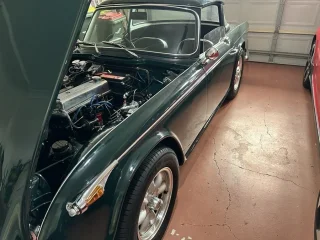BERT
VIP MEMBER
- Joined
- Nov 23, 2020
- Messages
- 697
If the steering head tube was precision machined first, I wonder how the bores were kept from distorting during the welding processWhy would they be inaccurate?
The frames were built by specialised companies in large numbers. (Over 50000 Commando frames not including spare parts frames)
The steering head is a heavy wall tube.
Station 1, face one end leaving 0.020" of cold sawed green on the other. (Or both ends could be done but is easier done at Station 2)
Station 2, the faced end goes against the positive stop which could be the chuck face, the outer end is faced to zero (the 0.020" green) with the boring tool then bored to depth.
The part is flipped, seat to the stop and the other cup bored.
In the case of the Commando the two cup depths are different but off Zero they could be within 0.002" to each other easily.
Maybe 45 seconds to do both cups in batches of 100's.
It would have been very interesting to have done a tour of the factories, both manufacture and assembly back in day and always seemed odd to have never seen a post from someone who worked on the shop floor, not the office.

